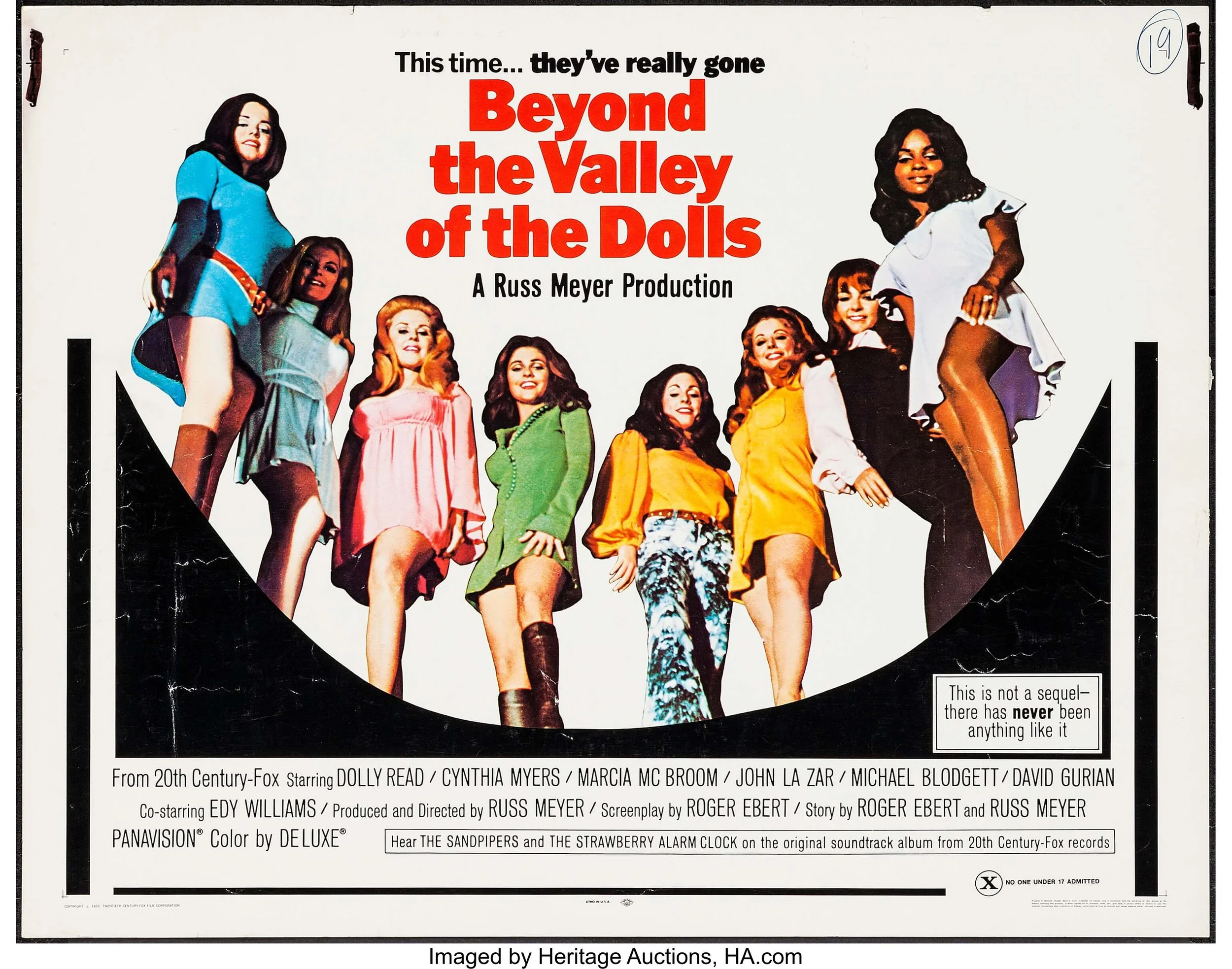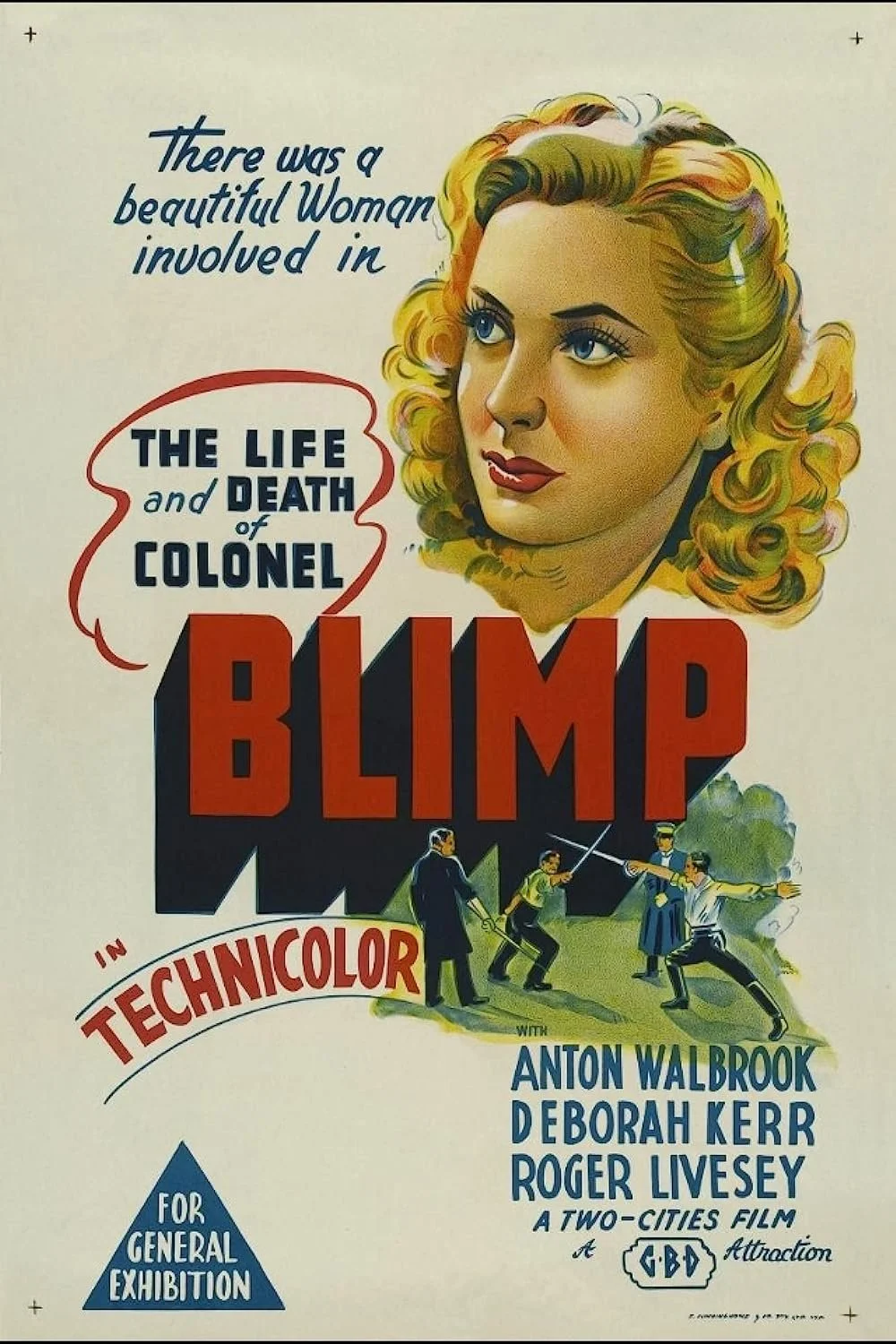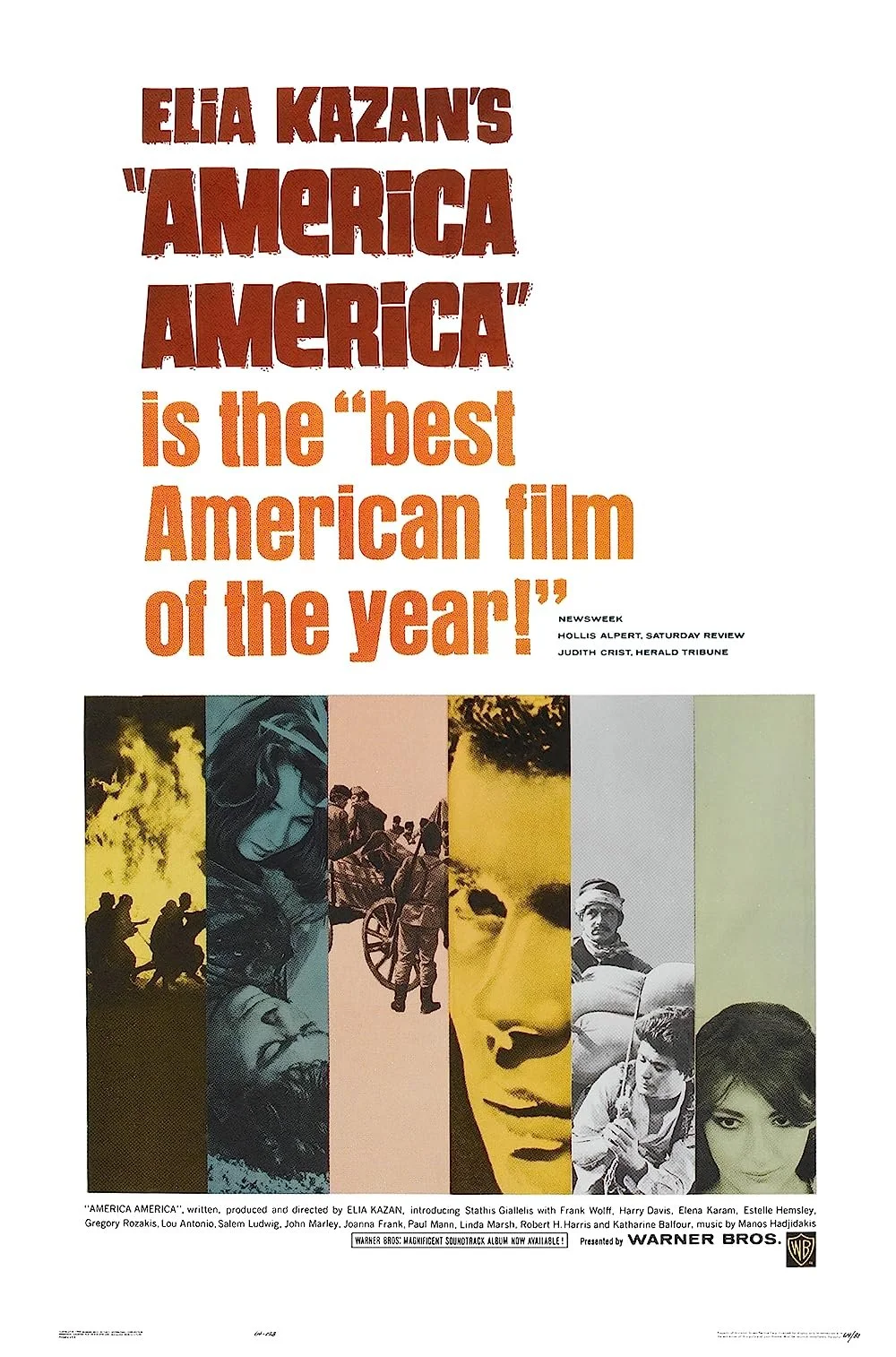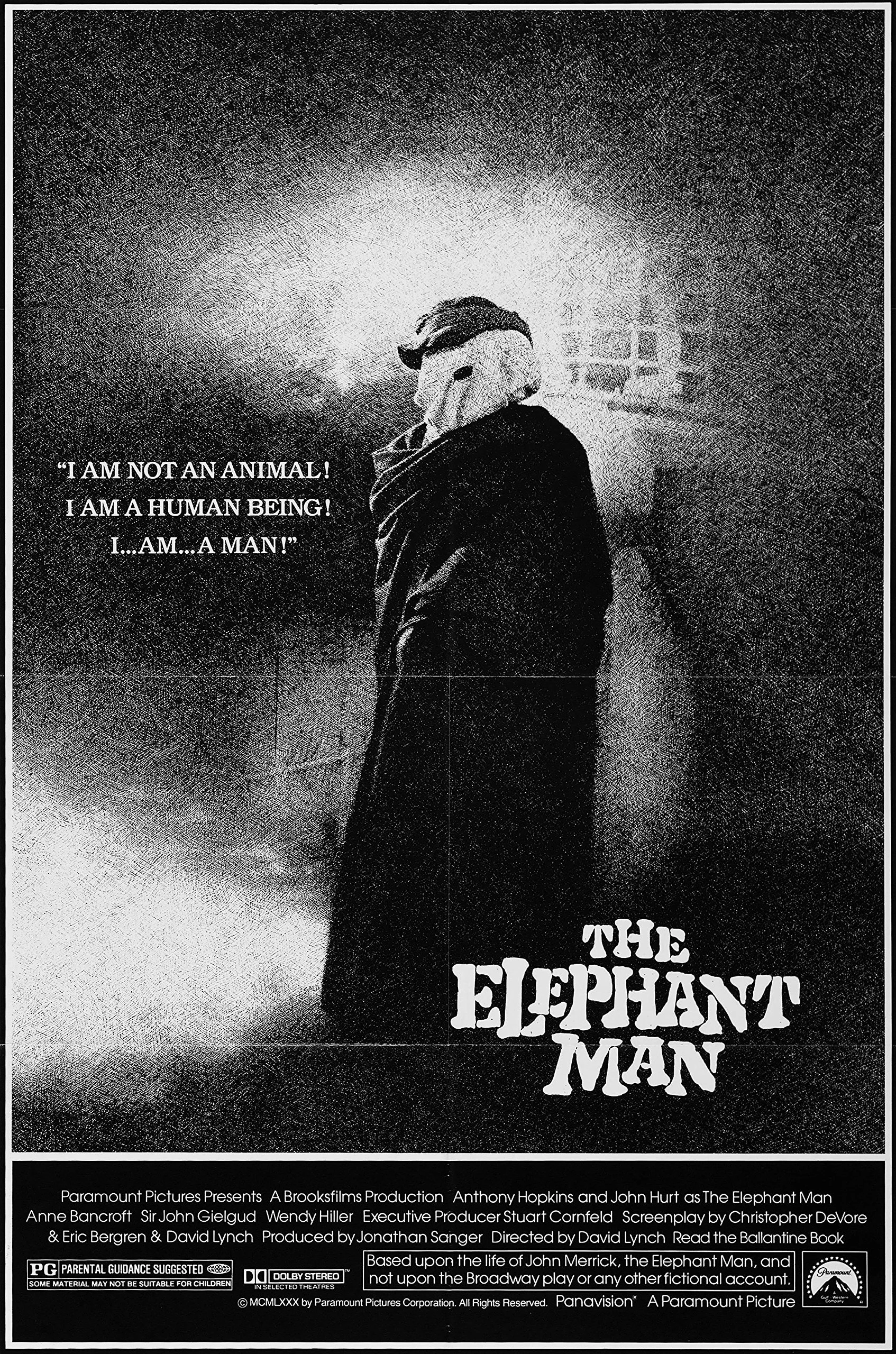RUSS MEYER 101 by Craig Hammill
How do you solve a problem like Russ Meyer? (Sung to the melody of How do You Solve a Problem like Maria from The Sound of Music)
First and foremost, Mr. Meyer and his cinema aren’t really a problem. They are a mind-befuddling joy. An insane vortex of sex, satire, idiosynchrasy, brazen individualism, and marquee filmmaking masquerading as burlesque, as exploitation, as the American male id stripped bare, than flogged, than made to heel at the Juno-esque bosom of the always more intelligent female at the heart of almost all of Meyer’s cinema.
Russ Meyer made many movies. On his tombstone in Stockton, California is engraved “King of the Nudies” followed by “I was glad to do it.” (True story).
Meyer made movies with titles like Vixen, Motorpsycho, Mondo Topless. . .But the crowning twin peaks upon which the film community shall always lay its head to succor will be 1965’s Faster Pussycat Kill Kill and 1970’s even greater Beyond the Valley of the Dolls. Voluptuous monuments to Meyer’s ripe fleshy talent.
What’s so confounding about Russ Meyer movies is that they shouldn’t still work. They shouldn’t have aged as well as they have. After all…
Read More
The Life and Death of Colonel Blimp (1943, dir. Emeric Pressburger & Michael Powell, UK) by Patrick McElroy
“40 years ago!”
Those are the words said by Major General Clive Candy, the main character in The Life and Death of Colonel Blimp, and they were uttered by the film’s director Michael Powell 40 years ago when he presented the new restoration 40 years after it was originally released.
Read More
America America (1963, dir. Elia Kazan, USA) by Patrick McElroy
When approaching the 4th of July holiday we often get an excess of jingoism, but what we fail to recognize is the value of immigrants, what they bring to the culture, and how they help retain it as a democracy. The journey of every one of them is unique, and few films explore it better than Elia Kazan’s 1963 film America America, released 60 years ago this year.
Read More
Fellini and the Deep Mysteries of Filmmaking by Craig Hammill
Yet, when I see a movie like Federico Fellini’s 1965 Juliet of the Spirits I can’t help but want to see a resurgence of that kind of mid-twentieth century art-house blockbuster. But with a new twist and new advance for our current times.
Read More
Two Parents of Almost All Cinema To Follow: Fritz Lang AND F. W. Murnau by Craig Hammill
I’ve had a theory for a long time that German expressionist filmmaker F.W. Murnau (Nosferatu, The Last Laugh, Sunrise) is the Ur-ancestor for a whole lineage of a certain kind of filmmaking.
Read More
Zero for Conduct (1933, dir. Jean Vigo, France) by Patrick McElroy
In every culture we know we have to grow up, which means losing the sense of childishness so we can take responsibility and be more considerate and open in our ways of thinking. But what we forget is our sense of childlikeness, which people often conflate with childishness – a sense of wonder, joy, and innocence. Adults forget what it’s like to be a kid, and force the worldly values of alignment, greed, and conformity on adolescence.
Read More
What is Movie Magic? Is it Dead? Can it Make a Comeback? by Craig Hammill
A light bulb popped on a few months ago. Since then the idea made visible has been the guiding illuminating concept of where I think Secret Movie Club needs to go.
We (the movie industry, movie lovers, movie makers, movie writers, the movie community in all its facets and myriad forms) need to re-vitalize and re-affirm the movie magic feeling.
Read More
The Naked Spur (1953, dir. Anthony Mann, US) by Patrick McElroy
When modern audiences think of the western genre from the golden age, they normally conjure up images of righteous heroes, with a simple black and white morality of good guys versus bad guys. What they don’t realize is what a generalization that is, and that there was a time after WWII and the Korean War, that the genre explored the conflict within our culture, and the despair of men who faced atrocity.
Read More
MINOR KEY HITCHCOCK: Dial M For Murder and To Catch a Thief by Craig Hammill
It always feels like the start of a backhanded compliment (or worse subtle putdown) to call any movie “minor” in a director’s body of work.
And yet, the minor movies often provide light and perspective on the major movies.
Read More
Bela Tarr’s 7 1/2-Hour Satantango is Utterly Engrossing. Who Knew? By Craig Hammill
Hungarian filmmaker Bela Tarr’s 7 1/2 hour 1994 opus Satantango is oft whispered about in the halls of movie lovers as one of the great white whales of cinema watching.
Have you seen it? Do you know about it? What is it actually like to watch it?
Read More
David Lynch's Most Overlooked Talent: Radical Empathy by Craig Hammill
Hitchcock made Saboteur (1942) and Shadow of a Doubt (1943) back to back. He even used the same cinematographer, Joseph Valentine, who would work one more time with Hitch on 1948’s Rope.
The two movies also share a distinction of showing, in snapshot, two sides of Hitchcock’s filmography.
Read More
Under the Skin: Hitchcock’s Brilliant Knack for Subtext by Craig Hammill
Hitchcock made Saboteur (1942) and Shadow of a Doubt (1943) back to back. He even used the same cinematographer, Joseph Valentine, who would work one more time with Hitch on 1948’s Rope.
The two movies also share a distinction of showing, in snapshot, two sides of Hitchcock’s filmography.
Read More












